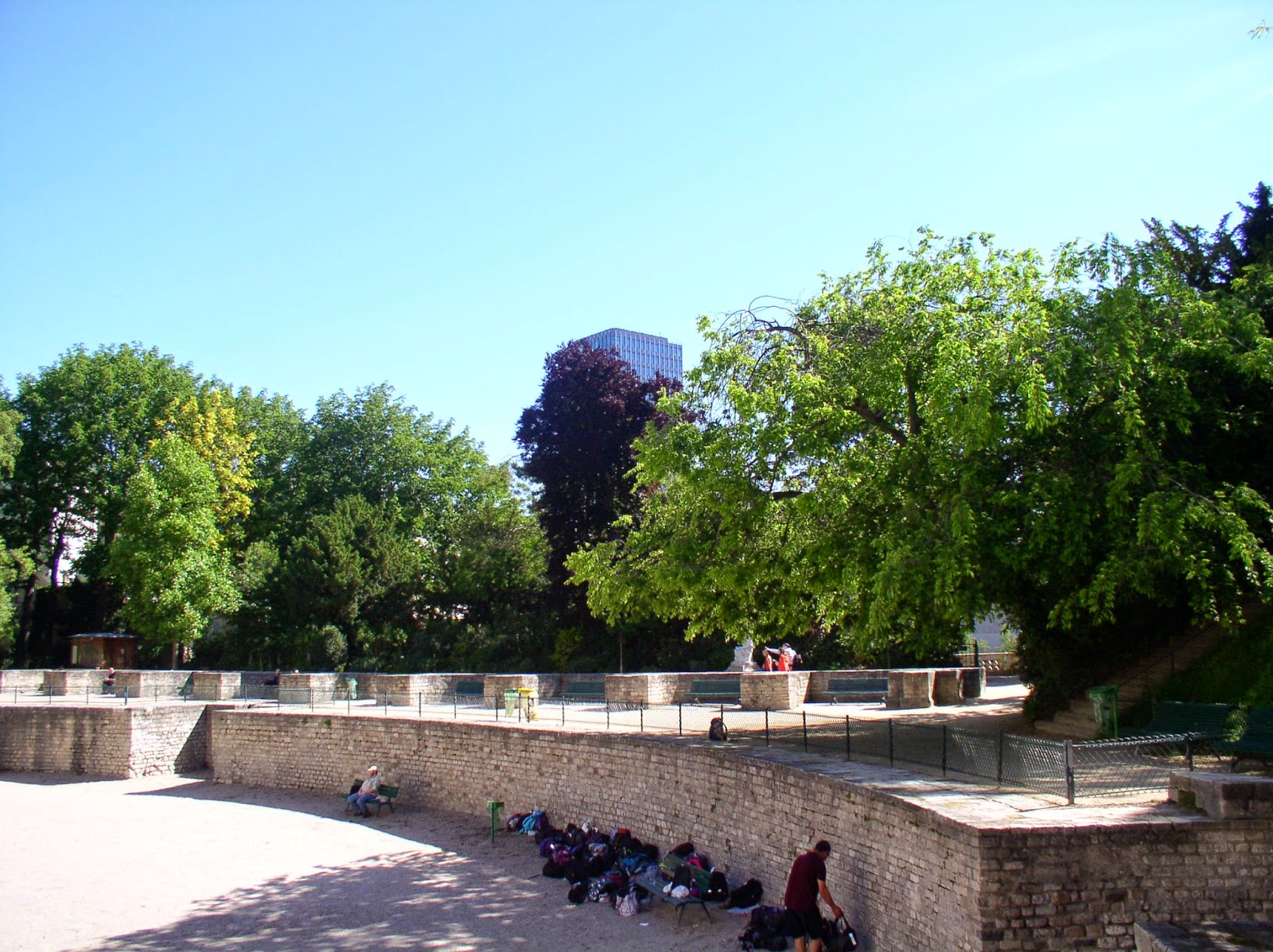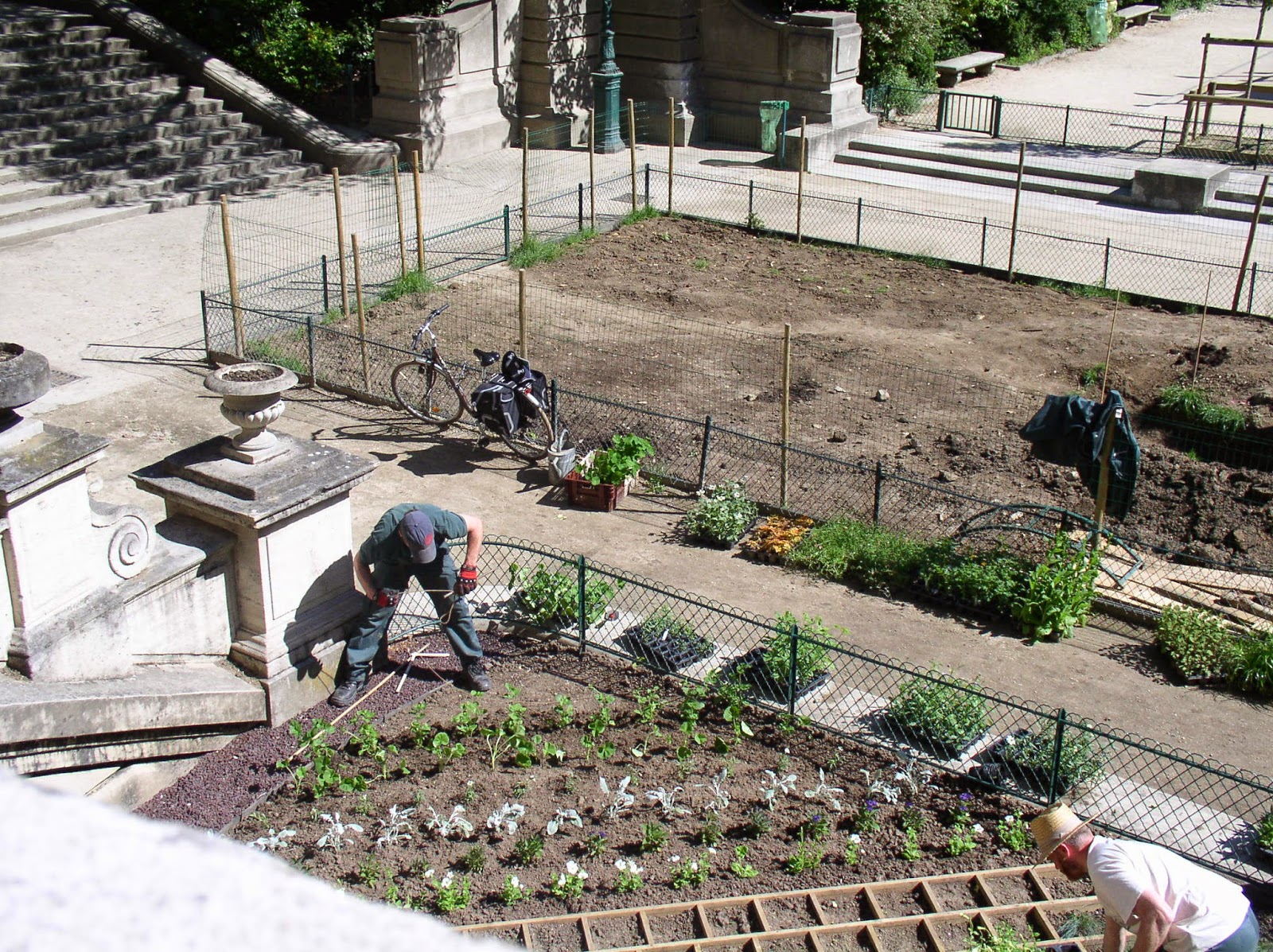The fifth arrondissement is home to the only remaining vestiges of the Gallo-Roman era in Paris. (Gallo-Roman describes the meld of the culture of Gaul and Rome under the Roman Empire.) The vestiges include the remains of the thermal baths at Musée de Cluny, and the Arènes de Lutèce. The Arènes de Lutèce (the former name of Paris) is a real Roman arena dating from the first century A.D. It was one of the largest of its kind ever built by the Romans. The Arènes was used as a theater, circus, and sporting arena. Seating accommodated about 15,000 audience members. Upper bleachers were relegated to women, children, slaves and those of lesser financial status, while the lower seats were reserved for Roman officials. Circus acts showcased wild animals and gladiator contests, and Greek tragedies were popular theatrical productions of the time. There were five cubbyhole-type indentations under the bleachers, some of which were believed to be barred animal cages that opened directly into the arena.
Now a public park and garden, visitors to Les Arènes de Lutèce will be able to view only a few remnants of the once-grand amphitheater. It is now a popular place for an outdoor lunch, a game of boules, or a pickup game of soccer.
From the street, the arena is concealed by large apartment buildings situated around it. There are three different entrances, but the easiest one to find is on rue Monge. At 47, rue Monge, there is a gladiator helmet over the doorway.
The gladiator helmet above the entrance to Les Arènes
The passageway through the building at 47, rue Monge
Behind the green doors is a totally unexpected sight.
“Les Arènes was constructed as an amphitheater in the first century AD. It was used until the decline of the Roman Empire in the third century, when barbarians destroyed Lutèce. Buried under masses of earth, it was unearthed in 1870 at the time of the great Haussmann renovation of Paris during the building of the future rue Monge.”
The Arènes de Lutèce is accessible by three different entrances. The first is a passageway through the building at 47, rue Monge; the second is an open corridor accessible from rue de Navarre through a gate ( pictured here); and the third is through the Square Capitan from its entrance at 10, rue des Arènes. You can also see 2 barred cages for animals that open out to the arena.
The arena and bleachers
Kids on the bleachers
The bleachers and the entryway from rue de Navarre
A view from the upper tier opposite the rue Monge entrance
Apartment building and end of the passageway from rue Monge
Bleachers to the right of the passageway
A view to the right of the passageway
A view from an upper level of the garden built around Les Arènes
A path from the street level on rue de Navarre continues upward.
The path circles and goes higher.
The top of the path
The stairs go downward to gain access to the upper tier of Les Arènes.
The upper tier of Les Arènes
The Jussieu campus tower is in the background.
The sculpture is a monument to the memory of Gabriel Mortillet, a French archaeologist and anthropologist who played an important role in early research on prehistoric man.
“Gabriel Mortillet - 1821-1898”
The path leads to an overlook of the Square Capitan.
Doctor and anthropologist Jean-Louis Capitan (1854-1929) continued excavation and restoration of Les Arènes toward the end of World War I. The neighboring Square Capitan is dedicated to his memory.
The steps on the left descend from the upper tier of Les Arènes.
June gardening continues on the Square Capitan.
After visiting the Arènes, retrace your steps through the building passageway or walk on rue Navarre toward rue Monge, cross rue Monge and climb the elegant staircase to Rue Rollin. This narrow pedestrian street will lead you to rue du Cardinal Lemoine, which is a short distance from the Place de la Contrescarpe.
A cherry-picker can be useful to a gardener, too.
There is a tubular watering system for each plant.
Place de la Contrescarpe is situated on rue Mouffetard, where rues Lacépède and Cardinal-Lemoine meet. It is a picturesque and popular square, surrounded by cafés and featuring a fountain at its center. Ernest Hemingway lived around the corner from there on rue du Cardinal-Lemoine on the third floor of number 74, and described the square in The Snows of Killimanjaro. Balzac also described it in Père Goriot. The fountain was put in in 1990. The word “contrescarpe” itself is from the creation in 1852 of a military emplacement there. The square now is dominated by two cafés, one of them La Chope, the other La Contrescarpe. Rue Lacépède feeds into the Place from the left.
The fountain in the Place de la Contrescarpe, with rue Mouffetard on the left
The fountain in the Place de la Contrescarpe with Café Delmas in the background.
Rue du Cardinal-Lemoine is between Café Delmas and Bistrot Italien.
The fountain, with streams of water shooting upward toward the middle
On the facade of no. 12 is a painted-glass sign, a vestige of the colonial era, which is the preserved storefront of Au Nègre Joyeux, “The Happy Negro Chocolate Factory.” It depicts a smiling black man dressed as a servant waiting on a white woman seated at a table. There is speculation that the black man is Zamor, the Bengali-born servant of Madame du Barry, serving his mistress her morning chocolate. Madame du Barry was the mistress of Louis XV, eventually betrayed by Zamor for her association with the nobility, and guillotined during the French Revolution. An online petition demanded the sign’s removal because of its racist overtones.
The Place de la Contrescarpe is the starting point for a visit to rue Mouffetard, the famous market street, which becomes pedestrian-only farther down the way. Rue Mouffetard has ancient origins and follows the line of the old Roman road to Italy. The area was not part of Baron Haussmann’s redevelopment plans because of its location on a hill, so it remained largely unchanged. (It’s best to start at this end of rue Mouffetard because the rest of the street is downhill all the way.)




































No comments:
Post a Comment